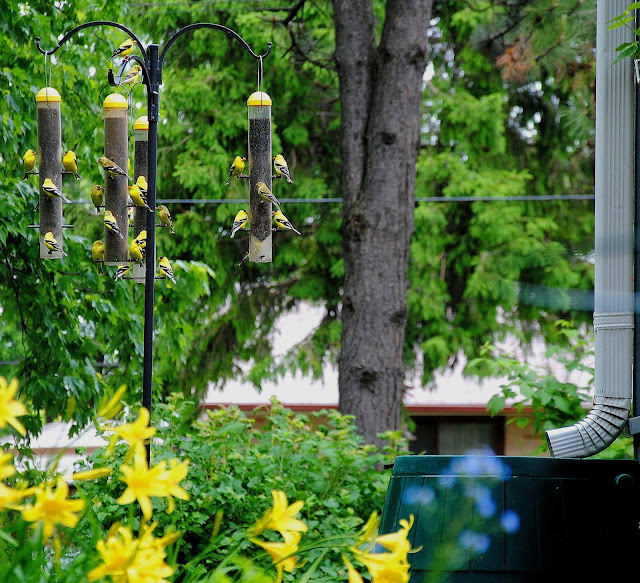Photos by Barry Wallace
EASTERN KINGBIRD
(Tyrannus tyrannus)
King Township does not have an official bird, as far as I know. However it's time we did have one and I'd like to propose the Eastern Kingbird. Apart from the extreme appropriateness of its official name 'Kingbird', this bird reminds me of the collective traits of many King Township residents. Famed birder Roger Tory Peterson, in his acclaimed field guide of the Birds of Eastern and Central North America has the following to say about this tyrant flycatcher: "White band across tip of tail identifies this species. Red crown mark is concealed and rarely seen. Often seems to fly quiveringly on 'tips of wings'. Harasses crows, hawks. Voice; a rapid sputter of high bickering notes. Habitat: Wood edges, river groves, farms, shelterbelts, orchards, roadsides, wires and fence posts". The general behaviour of this fiesty, tyrant flycatcher reminds me of many King residents who welcome a fight (above their weight in many cases) to protect their territory.
Please comment if you wish.
BarrytheBirder














































